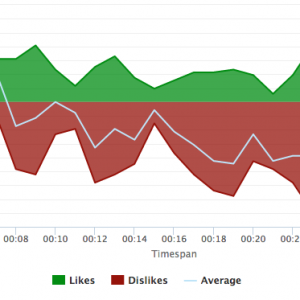Gaining Insight into Consumer Behavior: Strategies for Understanding Your Audience

Understanding consumer behavior is a crucial aspect of any successful marketing strategy. As a marketer, it is essential to have a deep understanding of what makes your target market tick so that you can create effective campaigns that resonate with them. By gaining insights into consumer behavior, you can craft messages that appeal to your audience’s values and motivations and create more personalized experiences that drive customer loyalty. In this article, we will explore a range of strategies for understanding your audience and utilizing those insights to fine-tune your marketing efforts.
The Importance of Understanding Consumer Behavior
Why is it essential to gain insights into consumer behavior? By understanding what drives your target audience, you can make more informed decisions about every aspect of your marketing campaigns, from the types of products or services you offer to the channels you use to promote them. At its core, marketing is about understanding people’s needs and developing solutions that address them effectively. The better you understand your audience, the more likely you are to create marketing messages that resonate with them and inspire them to take action.
One key benefit of understanding consumer behavior is the ability to tailor your products or services to meet their needs. By analyzing their behaviors and preferences, you can identify areas where your offerings can be improved or expanded to better meet their needs. For example, if your target audience values sustainability, you can incorporate eco-friendly materials into your products or services to appeal to their values and increase the likelihood of a purchase.
The Role of Consumer Behavior in Marketing Success
Consumer behavior plays a critical role in the success of marketing campaigns. The more you understand how your audience thinks, feels, and behaves, the better equipped you are to craft messages that connect with them on a deep level. When you can connect with your audience emotionally and tap into their motivations and desires, you’re more likely to drive them to take action, whether that’s making a purchase or signing up for a newsletter. In short, understanding consumer behavior is key to driving conversions, building long-lasting customer relationships, and ultimately, growing your business.
Another way that understanding consumer behavior can impact marketing success is through the identification of new opportunities. By analyzing trends and patterns in consumer behavior, you can identify new markets or niches that your business can tap into. For example, if you notice a growing interest in plant-based diets among your target audience, you could develop a line of vegan products to meet their needs and gain a competitive edge in the market.
How Consumer Behavior Impacts Brand Perception and Loyalty
Consumer behavior also plays a significant role in brand perception and loyalty. When you understand your audience’s values and beliefs, you can ensure that your messaging aligns with those values and create a strong brand identity that resonates with them. This can generate positive associations with your brand and increase customer loyalty, leading to repeat purchases and word-of-mouth referrals.
However, failing to understand your audience can have the opposite effect. If your messaging feels out of touch or insensitive to their needs, it can damage your brand’s reputation and drive customers away. For example, if your target audience values inclusivity and diversity, but your marketing materials only feature a narrow range of models or actors, it can create a negative perception of your brand and lead to lost sales.
In conclusion, understanding consumer behavior is crucial for any business that wants to succeed in today’s market. There are companies such as Spot Trender that have mastered the art of gaining insights into your audience’s needs, preferences, and motivations. They do this so you can ultimately create more effective marketing campaigns, tailor your products or services to meet their needs, identify new opportunities, and build a strong brand identity that resonates with them. So, take the time to analyze your target audience and gain a deeper understanding of their behavior – it could make all the difference in your business’s success.
Key Factors Influencing Consumer Behavior
Consumer behavior is a complex and multi-faceted process that is influenced by a variety of factors. Understanding these factors is crucial if you want to create effective marketing messages that resonate with your target audience. Let’s take a closer look at the key factors that can impact consumer behavior.
Psychological Factors
Psychological factors play a significant role in shaping consumer behavior. These factors include motivations, perceptions, and attitudes. Motivations are the underlying reasons why someone might seek out a particular product, service, or brand. For example, a person might be motivated to purchase a luxury car because they want to feel successful and prestigious. Perceptions refer to how a person perceives a product, brand, or marketing message. This perception can be influenced by a variety of factors, including past experiences, advertising, and word-of-mouth recommendations. Attitudes describe a person’s overall feelings toward a product or brand. These attitudes can be positive, negative, or neutral and can be influenced by a variety of factors, including personal experiences, cultural values, and social norms.
Understanding these psychological factors is essential if you want to craft marketing messages that resonate with your target audience. By tapping into their motivations, perceptions, and attitudes, you can create messages that speak directly to their needs and desires.
Social Factors
Social factors can also significantly impact consumer behavior. These factors include group norms, family influences, and cultural influences. When making purchasing decisions, people are often influenced by the values and opinions of those close to them. For example, a person might be more likely to purchase a product if they see their friends or family using it regularly. This is because they are influenced by the social norms and values of their peer group.
Family influences can also play a significant role in shaping consumer behavior. For example, children are often influenced by their parents’ purchasing decisions, and parents are often influenced by the needs and desires of their children. Cultural influences can also impact consumer behavior. Different cultures might place more or less emphasis on certain values, such as family, community, or individualism, which can influence how they make purchasing decisions.
Personal Factors
Personal factors, such as age, gender, income, and education, can also influence consumer behavior. These factors might impact a person’s preferences, needs, and goals, leading them to seek out different products or services than someone in a different demographic. For example, a young person might be more likely to purchase trendy clothing or technology products, while an older person might be more interested in products that offer comfort and convenience.
Income and education can also play a significant role in shaping consumer behavior. Wealthier individuals might be more likely to purchase luxury goods or invest in high-end services, while those with lower incomes might be more focused on affordability and practicality.
Cultural Factors
Cultural factors, such as societal values and beliefs, can also impact consumer behavior. For example, in some cultures, there is a strong emphasis on family and community, while in others, individualism is highly valued. These cultural values can influence how people make purchasing decisions and what products or services they are interested in.
Understanding the key factors that influence consumer behavior is essential if you want to create effective marketing messages that resonate with your target audience. By tapping into these factors and understanding what motivates your audience, you can create messages that speak directly to their needs and desires, ultimately driving more sales and building stronger customer relationships.
Research Methods for Analyzing Consumer Behavior
Now that we’ve explored some of the key factors that can impact consumer behavior, let’s take a look at some of the research methods that marketers can use to gain insights into their target audience.
Surveys and Questionnaires
Surveys and questionnaires are a popular research method that allows marketers to collect data directly from their target audience. By asking specific questions about people’s habits, preferences, and attitudes, you can gain valuable insights into what drives their behavior and how they make purchasing decisions.
Focus Groups
A focus group is a research method that involves bringing together a small group of people to discuss a particular topic or product. By observing how people interact with each other and respond to different prompts, you can gain deeper insights into their motivations and beliefs.
In-Depth Interviews
In-depth interviews are another research method that allows marketers to gain insights directly from their audience. Unlike surveys, which focus on collecting quantitative data, in-depth interviews are designed to uncover qualitative insights in more detail. By asking open-ended questions and allowing participants to share their thoughts and experiences freely, you can gain a deeper understanding of what drives their behavior.
Observational Research
Observational research involves observing people’s behavior in real-world settings, such as stores or online communities. By observing how people interact with products and brands and taking note of their behavior, you can gain valuable insights into their decision-making processes.
Online Behavior Tracking
Finally, online behavior tracking involves using technology to track people’s online behavior, such as what they click on, how long they spend on a particular page, and what products they purchase. This method can provide a wealth of data to inform marketing strategies and help marketers understand how their audience interacts with their brand online.
Utilizing Data to Create Targeted Marketing Strategies
Once you’ve gained insights into your audience through research methods like those listed above, it’s time to put that data to use. Here are a few strategies for utilizing your data to create more targeted marketing campaigns:
Segmenting Your Audience
By segmenting your audience based on demographics or behavior patterns, you can create more targeted messaging that resonates with each group. For example, creating separate campaigns targeted toward women and men or customers who are frequent purchasers versus those who only buy occasionally can lead to increased engagement and sales.
Personalizing Marketing Messages
Personalizing marketing messages to specific individuals can also significantly impact engagement and conversions. Using data on past purchases, browsing behavior, and other relevant information, you can create tailored messages that speak directly to each customer’s needs and motivations.
Optimizing Marketing Channels for Your Audience
Finally, using insights into your audience to optimize your marketing channels can lead to increased engagement and conversions. For example, if your audience is primarily active on social media, focusing your efforts on creating compelling social media content can lead to better results than, say, spending resources on print advertising or email marketing.
Conclusion
Understanding consumer behavior is key to creating effective marketing strategies that resonate with your target audience. By utilizing research methods to gain insights into factors impacting consumer behavior, you can create more personalized and relevant messages that drive engagement and conversions. Remember, putting the time and effort into understanding your audience’s needs and motivations is a fundamental aspect of building a successful marketing strategy that drives long-term business growth.








